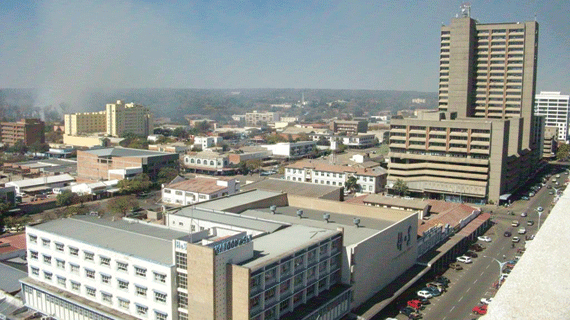
Zimbabwe must adopt the South African Rand as its official currency and dump the basket of multi-currencies currently in use if the economy is to perform better and improve liquidity, experts said on Thursday.
Zimbabwe is officially using nine foreign currencies including the United States dollar, Botswana Pula, and Chinese Yuan after it dumped its national currency at the height of hyperinflation in 2009.
But University of Zimbabwe Professor Ashok Chakravarti and World Bank Zimbabwe’s Crispen Mawadza said besides improving the macro-economic and fiscal environment, adoption of the Rand would benefit the stagnant economy, in a paper titled “Liquidity challenges in Zimbabwe: Turmoil and Tenacity.”
“The simplest way to gain competitiveness in Zimbabwe is to adopt the Rand, it will make our exports competitive and our imports low cost and that will automatically result in the balance of trade becoming much better,” Chakravarti said at an economic symposium.
“It is not the ideal solution; the ideal solution is to have your own national currency. In the absence of having our own national currency, the second best option is the Rand.”
With South Africa as Zimbabwe’s major trading partner, accounting for about 60 percent of trade, Chakravarti said using the Rand was the best way to address the worsening liquidity crunch the country is battling since adoption of multi-currencies.
Already, three other Southern African countries Lesotho, Namibia and Swaziland use the Rand.
Continued use of the greenback, a highly sought after currency, made the country a dumping ground for neighbouring countries, Chakravarti said.
- Chamisa under fire over US$120K donation
- Mavhunga puts DeMbare into Chibuku quarterfinals
- Pension funds bet on Cabora Bassa oilfields
- Councils defy govt fire tender directive
Keep Reading
“Because we have adopted the dollar, we have become the source of the US dollar for the whole region and everyone who wants the dollar just comes to Zimbabwe to sell something,” he said.
Chakravarti said the greenback was “a very high cost currency” which made it difficult for Zimbabwean products to compete on the export market.
On the other hand, local companies were reluctant to export as they easily accessed the US dollar locally.
Chakravarti said Zimbabwe must “be serious” in harnessing diaspora remittances by coming up with incentives for people living outside the country to channel funds through formal channels.
The Reserve Bank of Zimbabwe estimated diaspora remittances at over $1.6 billion in 2013.
– The Source










